Last year, many of us saw a posting regarding the VIM:Tribeca concert series. The organizers, Judd Greenstein and Kimball Gallagher, wanted to put on concert series of mostly new works; the composers were responsible for providing performers. The concerts were to be put on in the Gallerie Icosahedron (I’m deliberately not linking to them, for reasons that will be apparent soon!). The first indication of trouble to us should have been the delays, imposed by the gallery, regarding scheduling and, we found out later, the renting of a piano. The first public sign of trouble was the sudden announcement that the concert series was now to be called the ICO series.
When it was announced that my work had been accepted, I was thrilled. I was to be featured alongside Pamela Stein; I contacted Kathy Supové, who was going to play my new pieces for interactive piano. And, Pam was going to sing the premiere of a piece by Lukas Ligeti. This had all the makings of an exciting event.
On Thursday, we received the following note:
1) CONCERT FEE: all concerts will be subject to a $300 minimum, payable to the gallery in half a week before the concert, with the remainder due at the show. For double-bills, each artist will be responsible for half this figure. In addition to this de facto rental fee, all money over $600 in receipts from the door will continue to be split 50/50. The fee is a guarantee against low turnout – a deposit, essentially. These checks must arrive 1 week before each concert, beginning with the February 14th show, and all checks should be mailed to Gallerie Icosahedron, 27 N Moore St., New York, NY 10013, and made out to Gallerie Icosahedron.
2) TICKET PRICE: the ticket price will now be raised to $20, with no student discounts.
3) REHEARSAL FEE: all artists will have access to the gallery from 5-6:30 on the day of the show. Any other rehearsal times need to be scheduled in advance and will be available at a $40/hr rate.
4) INTERMISSION: there will be NO intermissions of any kind. For double-bills, there will be a brief set change, but even this will be less than a standard intermission.
5) COMPS: there will be no comps, except for press.
6) PIANO: the piano needs to be kept at the back of the gallery, and cannot be moved forward.
And, furthermore, Judd and Kimball were to be removed from the organization of the concerts themselves. Actually, we’d have to individually negotiate elements of the shows, if we wished to continue.
At this point, the series is in disarray. I haven’t kept track, but most of the participants have jumped ship. I’m not sure if I would have done this had these policies been in place beforehand. But, to impose these changes mid-season – mind you, the ICO had a full slate of concerts in the Fall of 2007 – is just infuriating. And, looking at their demands, the one that irks me the most is the policy against comps or student discounts. $20 is a steep fee, particularly when you’re just going to a gallery with folding chairs. $20 would get me into a lot of concert halls in many places (okay, nosebleed seats in some places), and with more comfortable chairs.
I’m aware that costs have risen tremendously in the past few months. But, assuming their gallery would have been open those nights anyway, would the ICO series really have been displacing $300 worth of business? $900, if you count the door costs.
What’s truly disturbing is the Kremlin-style overthrow of the originators of the series. Here you have two people who have done all the work, put a huge amount of time, energy, and, I assume, their own money into this project. It seems to me that the ICO people just want the series to go away, which it seem like it will.
First of all, here is my advice. If anyone is still planning on putting on one of the ICO concerts, please go support them. Go to the gallery, and have a good time. Don’t buy any refreshments if the gallery sells them. As a matter of fact, avoid direct eye contact with any gallery employee. However, if you see any art there you like, write down the name of the artist, and contact them directly when you go home. If you like, wait until their show at the ICO is done. Buy something else from them, but make sure no money goes to the Gallerie Icosahedron.
At one point, I have been told, they complained about the nature of the music being presented. It wasn’t ‘classical’ or ‘conservative’ enough. I didn’t realize that we were under the scrutiny of the new music police, telling us how to write as well as demanding that we pay – oh, and that piano is just there for decoration. I’m sure that their list of demands would eventually include no parallel 5ths or un-resolved dissonances – and, I’m sure, no Max patches.
This is truly a horrible situation for all of us. I understand that concerts do need to be canceled sometimes. Performers get sick or injured, the composer isn’t finished with the piece, sometimes even accidents occur in the performance venue. Yet, this is truly, truly appalling: a concert canceled because of greed and almost maniacal control exerted by the proprietors of the concert space. I am disgusted by their actions.
This morning, someone suggested that we try to find another location. I’m all for that, although I have my doubts that we’d be able to find a decent concert site that would have availability for all the events (which were scheduled on Thursdays). If that can be done, I’d be thrilled. I’d be happy to wait until the Fall. I’d be happy to pay or raise funds for a performance at a good venue. And, I’ll be happy to avoid walking down the street anywhere near the Gallerie Icosahedron.
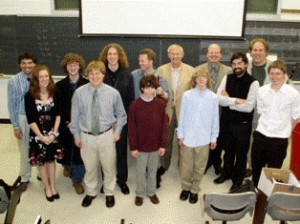 This past Friday, Westminster Choir College in Princeton, New Jersey hosted a masterclass for the Pictures 2008 project. This competition, sponsored by NJ Arts Collective and the Montclair Art Museum, invited NJ high school and college students to compose works based on a painting in the museum’s collection: Sunset by George Inness (1892). The winning works, as well as my new trio Innesscapes, will be presented on a concert given by the Halcyon Trio at the museum on May 9th at 8 PM. The event also features a pre-concert talk with Inness scholar Adrienne Baxter-Bell at 7:15.
This past Friday, Westminster Choir College in Princeton, New Jersey hosted a masterclass for the Pictures 2008 project. This competition, sponsored by NJ Arts Collective and the Montclair Art Museum, invited NJ high school and college students to compose works based on a painting in the museum’s collection: Sunset by George Inness (1892). The winning works, as well as my new trio Innesscapes, will be presented on a concert given by the Halcyon Trio at the museum on May 9th at 8 PM. The event also features a pre-concert talk with Inness scholar Adrienne Baxter-Bell at 7:15. Tim Risher
Tim Risher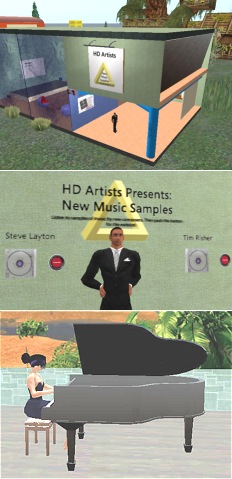 What Tim has dreamed up in his own little patch of turf within Second Life, is a place called HD Artists (for you folks who already wander this alternate world, here’s a
What Tim has dreamed up in his own little patch of turf within Second Life, is a place called HD Artists (for you folks who already wander this alternate world, here’s a 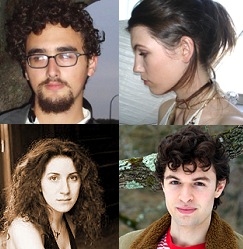 New Yawkers could do worse at 8 p.m. on March 1st, than drop by
New Yawkers could do worse at 8 p.m. on March 1st, than drop by 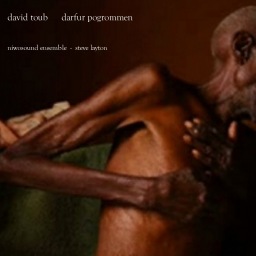
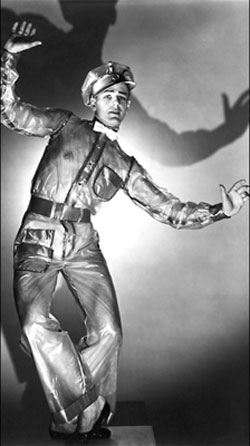 Dance is always about music, and music is, more often than not, about dance. But how does dance animate music, and music animate dance? This seemed to be the central question when I caught Program 1 of the San Francisco Ballet’s 75th anniversary season at the War Memorial Opera House February 9th. Classical ballet and modern dance sometimes plays against and even ignores the music’s rhythmic structure which would never happen in the deservedly popular Dancing With The Stars. But we rightly or wrongly cut the highbrow forms a bit more slack.
Dance is always about music, and music is, more often than not, about dance. But how does dance animate music, and music animate dance? This seemed to be the central question when I caught Program 1 of the San Francisco Ballet’s 75th anniversary season at the War Memorial Opera House February 9th. Classical ballet and modern dance sometimes plays against and even ignores the music’s rhythmic structure which would never happen in the deservedly popular Dancing With The Stars. But we rightly or wrongly cut the highbrow forms a bit more slack. 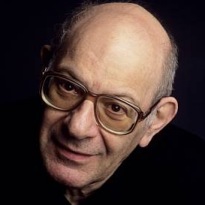 UBUWEB is playing online host to an excellent hour-long
UBUWEB is playing online host to an excellent hour-long  Michael Pisaro was born in Buffalo in 1961. He is a composer and guitarist, a member of the
Michael Pisaro was born in Buffalo in 1961. He is a composer and guitarist, a member of the